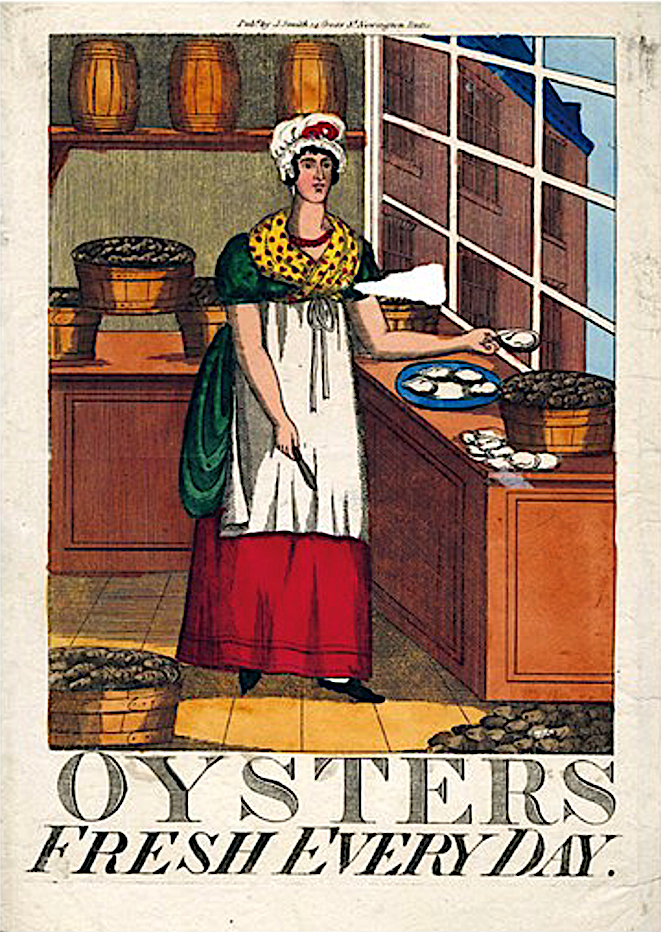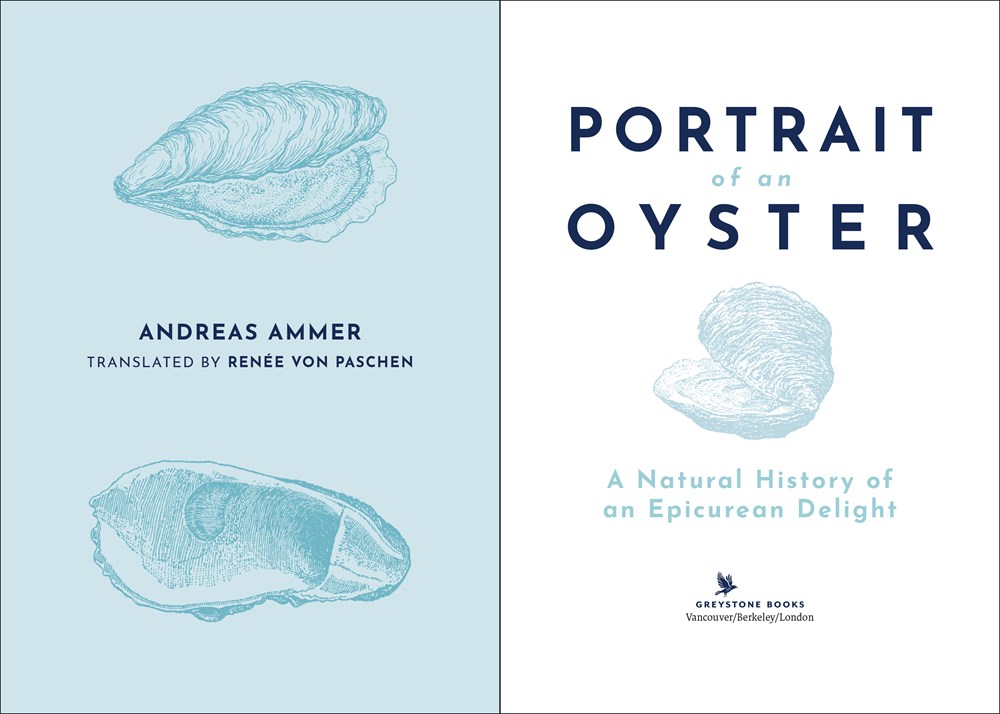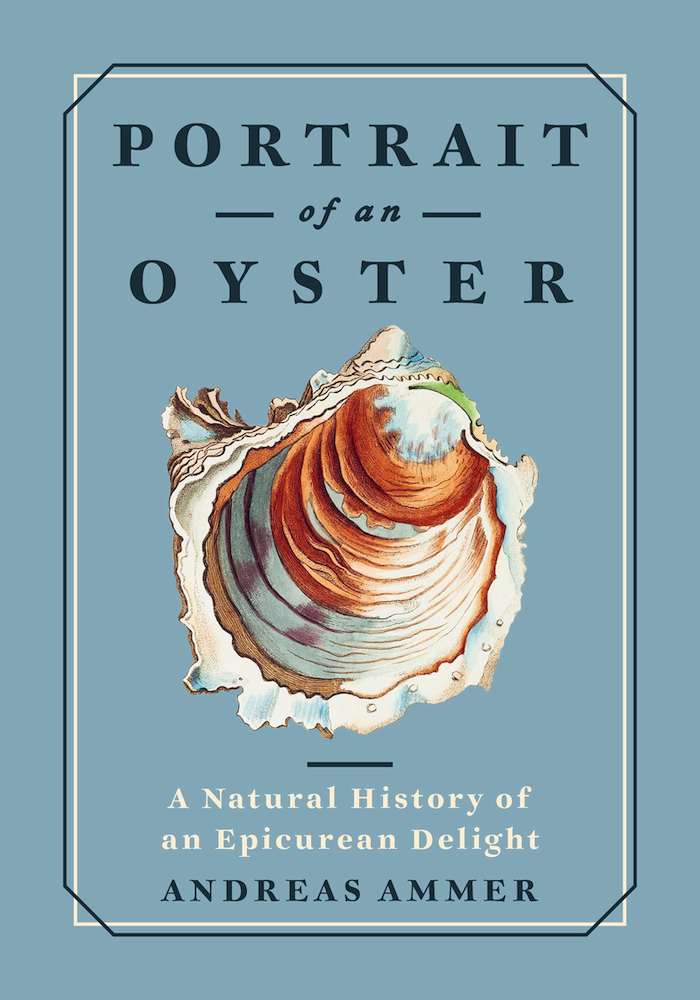If you’ve ever been curious about the sex life of an oyster, Andreas Ammer gives you the salacious details and explains their enduring charms in his fascinating book, Portrait of an Oyster.
Interestingly, oysters change gender several times during their life cycle, and Ammer tells us that the scientific name for that phenomenon is “sequential hermaphroditism”.
However, he also tells us that they do not fall in love or have a family life, begging the question, “Can an oyster be happy?” The answer, he says, is that the oyster remains content within its shell. I would suggest that they also bring an immense amount of contentment to those who consume them.
When we consume oysters, we don’t often think about their journey to get to our plates, let alone their history in the world and their influence and significance in culture and art over the centuries. There are some fascinating anecdotes in this book about oyster farmers, chefs and the restaurants that serve oysters.

I was intrigued with the story of Café de Turin in Nice in France, where the Roumégous family through five generations have been both farming oysters and serving them for more than 100 years. It’s certainly now a must when I go back to Nice.
Portrait of an Oyster contains many surprising pearls, not the least of which is the story of burlesque dancer, Kitty West, who in her show ‘Evangeline the Oyster Girl’, at the Casino Royale in Bourbon Street New Orleans, appeared Aphrodite-like scantily clad inside a giant oyster shell with an enormous pearl. All of which, of course, leads us back to sex.
Ammer finds it surprising that the oyster has continually been used and regarded as an aphrodisiac, yet he points to the erotic nature of oysters, especially in the way they have been written about in literature and depicted in art. Oysters are an ongoing erotic theme in popular culture. Everyone from Cassanova to Michael Ondaatje (yes, really) have incorporated oysters into their descriptions of erotic scenes.

The most striking connection of oysters with eroticism is through art, and the book includes reproductions of some famous suggestive artworks such as Le Perle, an anonymous postcard from the 1930s, The Feast of the Gods by Frans Floris, and The Oyster Meal by Frans van Mieris the Elder. Oysters have also been drawn to represent female genitalia.
But let’s not get hung up on sex. The book also includes reproductions of some famous and iconic paintings related to oysters, including Manet’s Beggar with Oysters and a number of his other paintings with oysters, as well as Carlo Ponti’s Oyster Vendor in Venice. In fact, the illustrations and reproductions in this book are a real feature.
Oyster bars and restaurants
Ammer also highlights some of the oldest and most iconic oyster bars and restaurants around the world as well as what various chefs have done with their oyster dishes. He notes how René Redzepi at Noma in Copenhagen changed from cooking oysters to serving them raw or natural with an original touch.
Ammer talks about oysters having been eaten since time immemorial and the fact that oyster shells have become an important find in archaeology, turning up in some unexpected places far inland.
He provides a comprehensive picture of oyster farming and the problems with the European oyster becoming almost extinct except for some exceptional restoration work. The problem is the Pacific Oyster that has become a prolific coloniser in Europe and other places; it now accounts for the largest production worldwide.

One section of the book is devoted to ‘Portraits’, in which Ammer provides a very useful description, picture and profile of different types of oysters. These include the Pacific, the European Flat Oyster, the Eastern Oyster, the Kumamoto, the Portuguese Oyster, the European Thorny Oyster and the Pacific Pearl Oyster.
It should be noted that the book is almost exclusively focussed on the northern hemisphere. I’d like to invite the author to Australia to sample our famous Sydney Rock oysters, especially from the crystal-clear waters of the Sapphire Coast, and the native but less common Angasi oyster.
Next time you sit down to eat a dozen, having read Portrait of an Oyster you’ll have a new appreciation of oysters and the contentment will be even greater.
Portrait of an Oyster: An Epicurean History of an Epicurean Delight, by Andreas Ammer, published by Greystone Books. Distributed in Australia by NewSouth Books, RRP $39.99.
